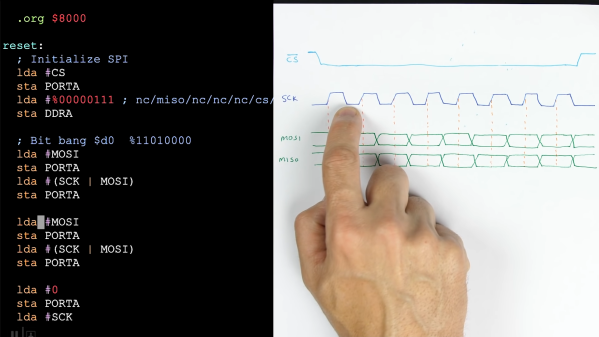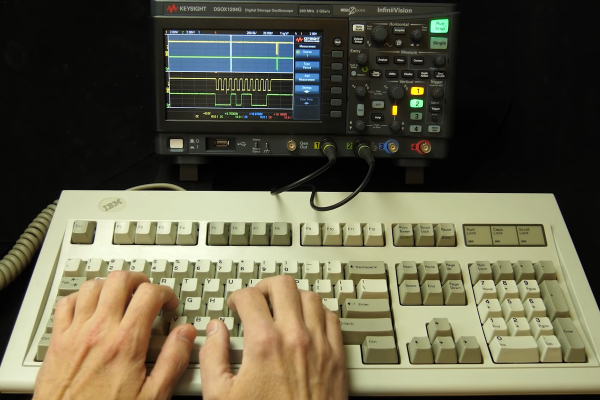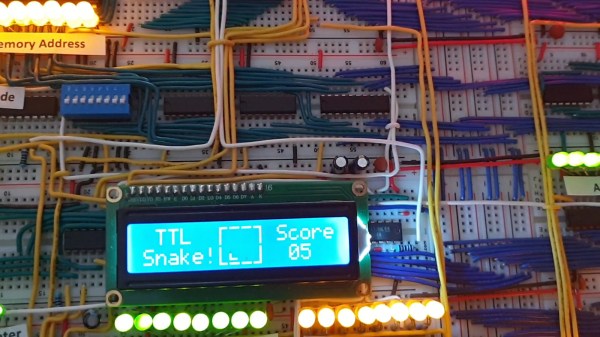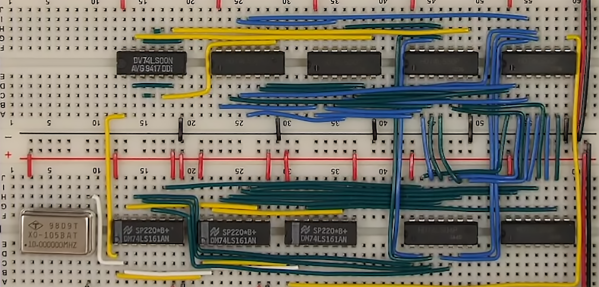[Ben Eater] has been working on building computers on breadboards for a while now, alongside doing a few tutorials and guides as YouTube videos. A few enterprising hackers have already duplicated [Ben]’s efforts, but so far all of these builds are just a bunch of LEDs and switches. The next frontier is a video card, but one only capable of displaying thousands of pixels from circuitry built entirely on a breadboard.
This review begins with a review of VGA standards, eventually settling on an 800×600 resolution display with 60 MHz timing. The pixel clock of this video card is being clocked down from 40 MHz to 10 MHz, and the resulting display will have a resolution of 200×150. That’s good enough to display an image, but first [Ben] needs to get the horizontal timing right. This means a circuit to count pixels, and inject the front porch, sync pulse, and back porch at the end of each horizontal line.
To generate a single horizontal line, [Ben]’s circuit first has to count out 200 pixels, send a blanking interval, then set the sync low, and finally another blanking interval before rolling down to the next line. This is done with a series of 74LS161 binary counters set up to simply count from 0 to 264. To generate the front porch, sync, and back porch, a trio of 8-input NAND gates are set up to send a low signal at the relevant point in a horizontal scan line.
The entire build takes up four solderless breadboards and uses twenty logic chips, but this isn’t done yet: all this confabulation of chips and wires does is step through the pixel data for the horizontal and vertical lines. A VGA monitor detects it’s in the right mode, but there’s no actual data — that’ll be the focus of the next part of this build where [Ben] starts pushing pixels to a monitor.
Continue reading “Low Res Video Card Is Still Amazing Since It’s Made Out Of Logic Chips” →
















